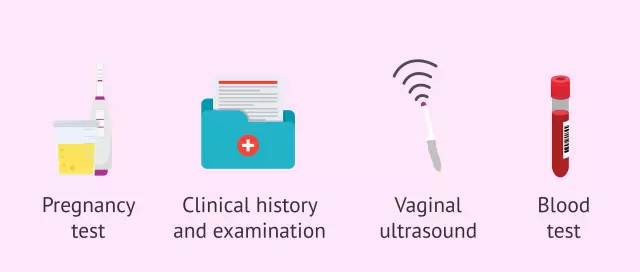- Author Rachel Wainwright [email protected].
- Public 2023-12-15 07:39.
- Last modified 2025-11-02 20:14.
Gardnerellosis
General characteristics of the disease

Gardnerellosis is a fairly common infectious disease. It is caused by the bacterium Gardnerella vaginalis, trapped on the vaginal mucosa. A small amount of these microorganisms can also be observed in a healthy woman. Only an increased concentration of the bacteria Gardnerella vaginalis in the vagina leads to the manifestation of symptoms of gardnerellosis.
Gardnerellosis is sexually transmitted and occurs in about 20% of women of fertile (childbearing) age. The factors predisposing to gardnerellosis are pregnancy, menopause, hormonal imbalance, diabetes mellitus and other endocrine diseases. The incubation period from the moment of infection with Gardnerella vaginalis to the manifestation of the first symptoms of gardnerella is 3-10 days. In men, gardnerellosis is not less common, but due to the asymptomatic course of the disease, it is much more difficult to diagnose pathology at an early stage.
Symptoms of gardnerellosis in women
The most favorable breeding ground for the bacteria Gardnerella vaginalis is the vagina. Gardnerellosis in women begins with the mass reproduction of the microorganism and the gradual displacement of bacteria that form the normal vaginal environment. A disturbed vaginal microbiocenosis leads to the demonstration of the main symptoms of gardnerellosis: to gynecological inflammatory processes, abundant grayish-green discharge with a specific fishy odor, itching, burning.
The symptoms of gardnerellosis worsen after intercourse. In advanced cases in women, gardnerellosis can develop into hemorrhagic cystitis or pyelonephritis. In pregnant women, the disease often leads to uterine bleeding, early rupture of the membranes and premature birth, postpartum endometritis and low birth weight.
Gardnerellosis in men
Gardnerellosis in men is considered a specific sexually transmitted disease. The peculiarity of this disease is that in most cases the bacterium Gardnerella vaginalis is harmless for the male body. Serious problems with reproductive health can develop with gardnerellosis in men only with significantly reduced immunity or with high concentrations of the pathogenic microorganism. Medicine knows cases of gardnerellosis in men, leading to urethritis, prostatitis and epididymitis (inflammation of the epididymis). However, all these serious complications of gardnerellosis in men are the exception rather than the rule. Usually, the male body copes with the causative agent of the disease in 2-3 days. Sometimes the carriage of the bacterium Gardnerella vaginalis develops without any symptoms of gardnerellosis in a man.
Diagnosis of gardnerellosis
To diagnose gardnerellosis in women, laboratory studies of secretions and desquamated cells of the vaginal mucosa are used. The presence of the disease is indicated by an increase in the acidity of the vaginal environment above 4.5 pH, a positive amine test confirming an increased number of anaerobic bacteria, as well as the detection of the microorganisms themselves Gardnerella vaginalis in the desquamated cells of the vaginal epithelium. By itself, a pathogenic bacterium is not yet a symptom of gardnerellosis, since small amounts of a pathogenic microorganism are allowed in a healthy person.
The most informative method for the quantitative determination of gardnerellosis in women is the PCR technology (polymer chain reaction). It can also be used in the diagnosis of gardnerellosis in men for the analysis of urine, semen, scraping of the urogenital tract and prostate secretions. The sensitivity of this method is up to 100%.
Treatment of gardnerellosis

Treatment of gardnerellosis in women is complex, involving a simultaneous decrease in the number of pathogenic microorganisms, colonization of the vagina with valuable lactobacilli and a general increase in the body's immunity. The destruction of Gardnerella vaginalis usually occurs with the help of local antibiotic therapy. Immunity is strengthened by the appointment of immunomodulators. The most difficult and longest stage in the treatment of gardnerellosis in women is the population of the vagina with beneficial bacteria. For this purpose, eubitotics with live bacterial cultures are used.
The effectiveness of the treatment of gardnerellosis in women is determined by the results of control tests, which are carried out every 4-6 weeks. Treatment of gardnerellosis in men is local, as a rule, without the use of antibiotic therapy. In order to avoid recurrence of infection, therapy of both sexual partners is mandatory. For the entire period of treatment of gardnerellosis, patients are recommended to use barrier methods of contraception.
Prevention of gardnerellosis
Prevention of the disease in men consists in the use of condoms for casual sexual intercourse, as well as in the timely diagnosis and treatment of gardnerellosis in a woman who is a permanent sexual partner. You can avoid the development of gardnerellosis in women with the help of a healthy lifestyle and respect for your health: thanks to good nutrition, adequate sleep, the absence of hypothermia and regular visits to the gynecologist.
YouTube video related to the article:
The information is generalized and provided for informational purposes only. At the first sign of illness, see your doctor. Self-medication is hazardous to health!






